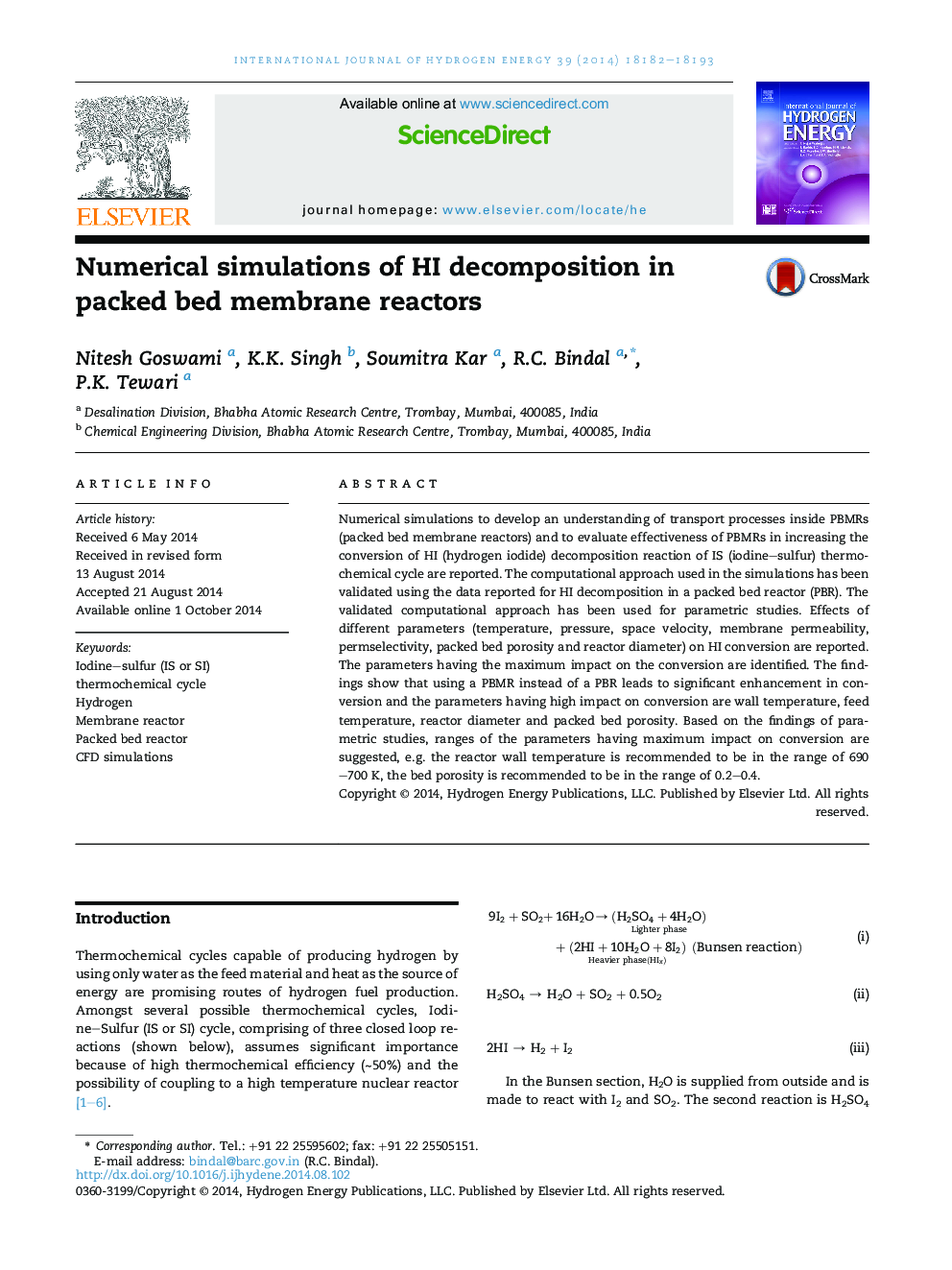| Article ID | Journal | Published Year | Pages | File Type |
|---|---|---|---|---|
| 1280828 | International Journal of Hydrogen Energy | 2014 | 12 Pages |
•Numerical simulation of PBMR and PBR for HI decomposition reaction.•Comparison of conversion in PBMR and PBR.•Insights into underlying transport phenomena and functioning of PBMR for HI decomposition.•Parametric studies to understand effects of different parameters on conversion.•Identification of parameters having maximum impact on conversion.
Numerical simulations to develop an understanding of transport processes inside PBMRs (packed bed membrane reactors) and to evaluate effectiveness of PBMRs in increasing the conversion of HI (hydrogen iodide) decomposition reaction of IS (iodine–sulfur) thermochemical cycle are reported. The computational approach used in the simulations has been validated using the data reported for HI decomposition in a packed bed reactor (PBR). The validated computational approach has been used for parametric studies. Effects of different parameters (temperature, pressure, space velocity, membrane permeability, permselectivity, packed bed porosity and reactor diameter) on HI conversion are reported. The parameters having the maximum impact on the conversion are identified. The findings show that using a PBMR instead of a PBR leads to significant enhancement in conversion and the parameters having high impact on conversion are wall temperature, feed temperature, reactor diameter and packed bed porosity. Based on the findings of parametric studies, ranges of the parameters having maximum impact on conversion are suggested, e.g. the reactor wall temperature is recommended to be in the range of 690–700 K, the bed porosity is recommended to be in the range of 0.2–0.4.
